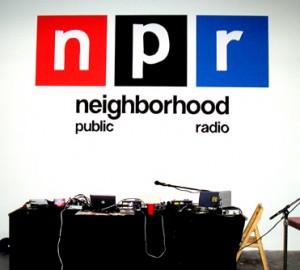
Image via Wikipedia
Dan Rather and Tucker Carlson spoke with George Mason students through video conference on Feb. 24, 2011 to speak about the state of journalism and where it’s headed.
Rather, who was the news anchor for the CBS Evening News from 1981 to 2005 and is now the anchor of Dan Rather Reports on HDNet and Carlson, co-founder and editor-in-chief of The Daily Caller and former co-host of Crossfire on CNN, joined students participating from the George Mason University Studio along with Steve Scully, the political editor for the C-SPAN networks, and students from the University of Denver, Purdue University and Georgetown University.
The distance learning course, which is produced by C-SPAN, is a unique opportunity for students to interview guests via video conference. The course airs on C-SPAN3 on Fridays at 5 p.m. and also streams online.
So according to Dan Rather, what makes a good reporter?
“Curiosity and determination makes a good reporter,” Rather said. “Writing is a bedrock of the craft.” Even if you want to get into television or radio, you have to be a good writer to be a good reporter.
Rather has been working in news since 1950 and was there to report about John F. Kennedy’s assassination, one of the hardest events to work through. He reported what he saw from the Zapruder film directly from memory and was remarkably calm through the live telecast.
“As a professional you are hit with the same emotions everyone else has, but you have to seal out those emotions,” Rather said. Sealing out those emotions were what allowed Rather to report how JFK died in such a calm manner.
When Kennedy’s assassination occurred, the television was the national hearth according to Rather, replacing radio. After 9/11, the Internet was becoming the national hearth.
“Now here in 2011, we’re in the Internet age,” Rather said. “President Obama is our first Internet president.”
Rather has often spoken out about the lack of courage amongst journalists in today’s media to ask tough questions. Tucker Carlson weighed in along with rather about what journalism needs now.
“Basically what journalism needs is more guts and a sense of independence,” Rather said.
“The best journalism is tough and it pays no regard to authority and it doesn’t suck up to power,” Carlson said. “A central problem is the unwillingness to take on central authority.
“Journalism’s not complicated, it’s a matter of finding out what happened and reporting it to the people.”











